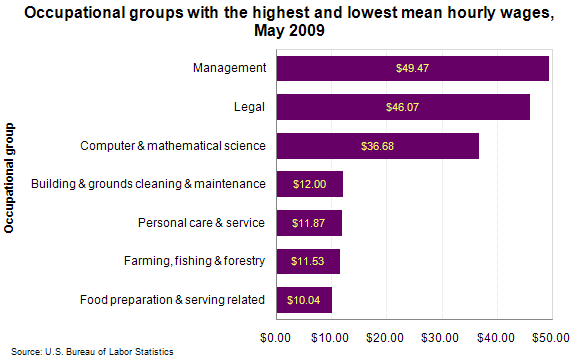The occupational groups with the highest mean hourly wages in May 2009 included management occupations ($49.47), legal occupations ($46.07), and computer and mathematical science occupations ($36.68). Among the lowest-paying occupational groups were food preparation and serving related occupations ($10.04); farming, fishing, and forestry occupations ($11.53); personal care and service occupations ($11.87); and building and grounds cleaning and maintenance occupations ($12.00).
While some occupational groups were highly concentrated in specific industry sectors, others were distributed more evenly across sectors. For example, nearly 89 percent of employment in education, training and library occupations was found in the educational services sector, and about 88 percent of employment in healthcare support occupations was found in the health care and social assistance sector.
In contrast, although retail trade, finance and insurance, and health care and social assistance were among the largest employers of office and administrative support occupations, no single sector employed more than 12.3 percent of this group.
This data is from the Occupational Employment Statistics (OES) program. To learn more, see "Occupational Employment and Wages — May 2009" (HTML) (PDF), news release USDL-10-0646. The mean hourly wage rate for an occupation is the total wages that all workers in the occupation earn in an hour divided by the total employment of the occupation.





